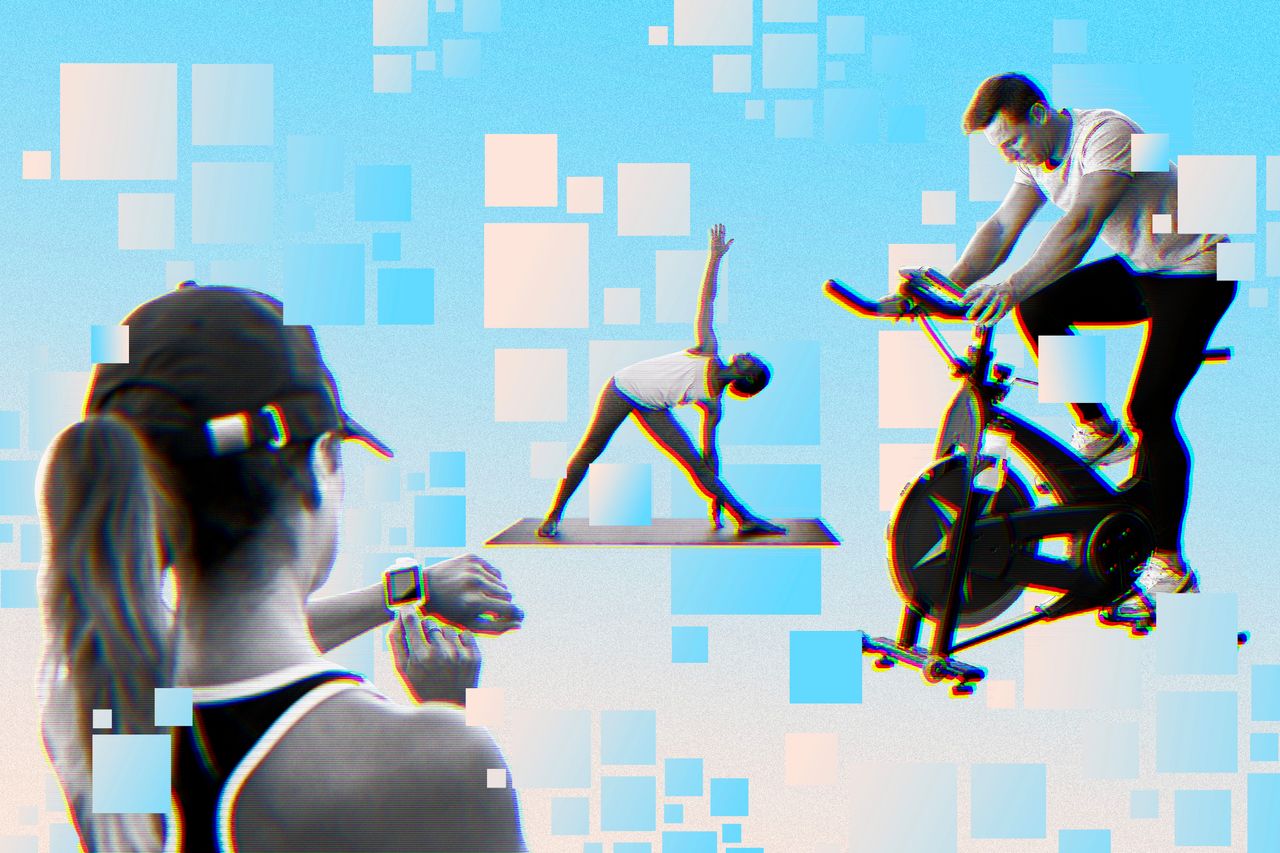The Best Fitness Apps for Working Out At Home
Pick a fitness platform that has exercises for your fitness level.
I’m a card-carrying member of Club Living Room. Don’t get me wrong: I used to hit the gym at least three times a week. But when I started working—and working out—from home, I became a convert. Mostly because of fitness apps.
These apps saved me money, and fit anywhere in my chaotic schedule. Even with the return to in-person workouts, I plan to keep them in my routine. For most people, regardless of age, fitness level or amount of disposable income, the smartest path to fitness is through an app.
Sure, connected-gym hardware offers an integrated, distraction-free, sensor-laden social experience. But it has high upfront costs plus a monthly subscription, and often runs proprietary software that doesn’t work with other content providers.
Fitness apps, on the other hand, can be customized to work at home or in a gym, with or without equipment, as well as outdoors. They can make working out from home, or wherever you are, easy, fun and effective—as long as you pick the right one. The number of options is overwhelming: App Annie, a mobile analytics firm, estimates that the iOS and Android app stores had at least 71,000 health-and-fitness apps world-wide in 2020.
What should a good fitness app offer? And how do you use an app to create a well-rounded, sustainable exercise routine?
“Fitness is not one size fits all. A good app will account for that by offering variety,” said Zakkoyya Lewis-Trammell, assistant professor of kinesiology at California State Polytechnic University, Pomona. That could mean a mix of workouts by length, intensity and style that allows you to choose, depending on your needs and fitness level.
The most important aspect of a fitness app is that it offers exercise you like to do, according to Aimee Layton, assistant professor of physiology at Columbia University Medical Center and member of Peloton’s Health and Wellness Advisory Council, or combines something you like to do with exercising—for instance, watching TV while using an indoor biking app such as Zwift.
“Self-efficacy,” or believing that you can successfully do what the program is asking of you, is another critical feature, Dr. Layton says.
After testing dozens of different fitness apps, I have a few tips of my own:
• Free content on YouTube and free trials can help you figure out which kind of workouts you enjoy doing before committing to a program. (On iOS and Android, you can immediately unsubscribe to avoid being charged.) A paid subscription, however, can mean a better experience and greater commitment.
• During an activity, turn on Do Not Disturb. An email pop-up can quickly cut a workout short. (On iOS, you can even set up a fitness-specific Focus mode to allow truly important stuff through.)
• Access to downloadable classes is useful, especially for frequent travellers or people with poor internet connectivity.
The following apps, my favourites during the past year, have all of the above in mind. They kept me engaged with many different types of workouts, as well as options for warm-ups and cool-downs to prevent injury. But, of course, working out is a highly personal activity, so try before you buy—all of these platforms offer a free trial.
Peloton Digital
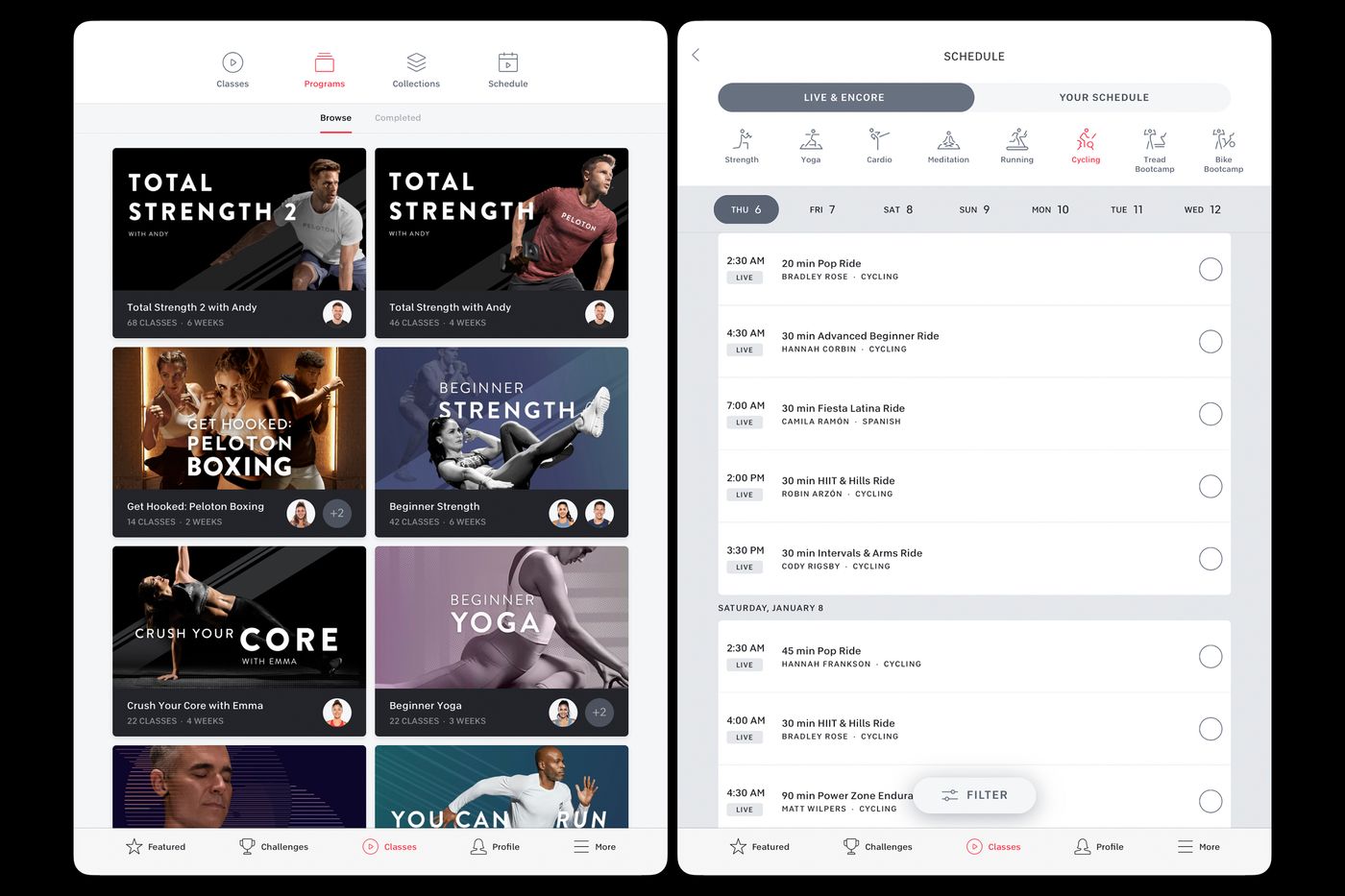
It’s for Music-motivated fitness enthusiasts
Price: $16.99 a month
Platforms: iOS, Android, web, Apple TV, Amazon Fire TV, Roku, Android TV
Peloton offers plenty to its app subscribers, customers who don’t have the company’s pricey bike or treadmill. Tune into multiple live-streamed classes a day, or download on-demand workouts offline. The app’s music-themed Artist Series workouts are best: Try the BTS ride, AC/DC full-body strength class and Beyoncé dance cardio. There are guided outdoor runs and walks, too. You can connect a Bluetooth heart-rate sensor or Apple Watch to see a “strive score” based on heart-rate zones. App users can’t see how their metrics stack up against other members’ on Peloton’s leaderboard—that’s exclusive to the people who own its equipment.
Alo Moves
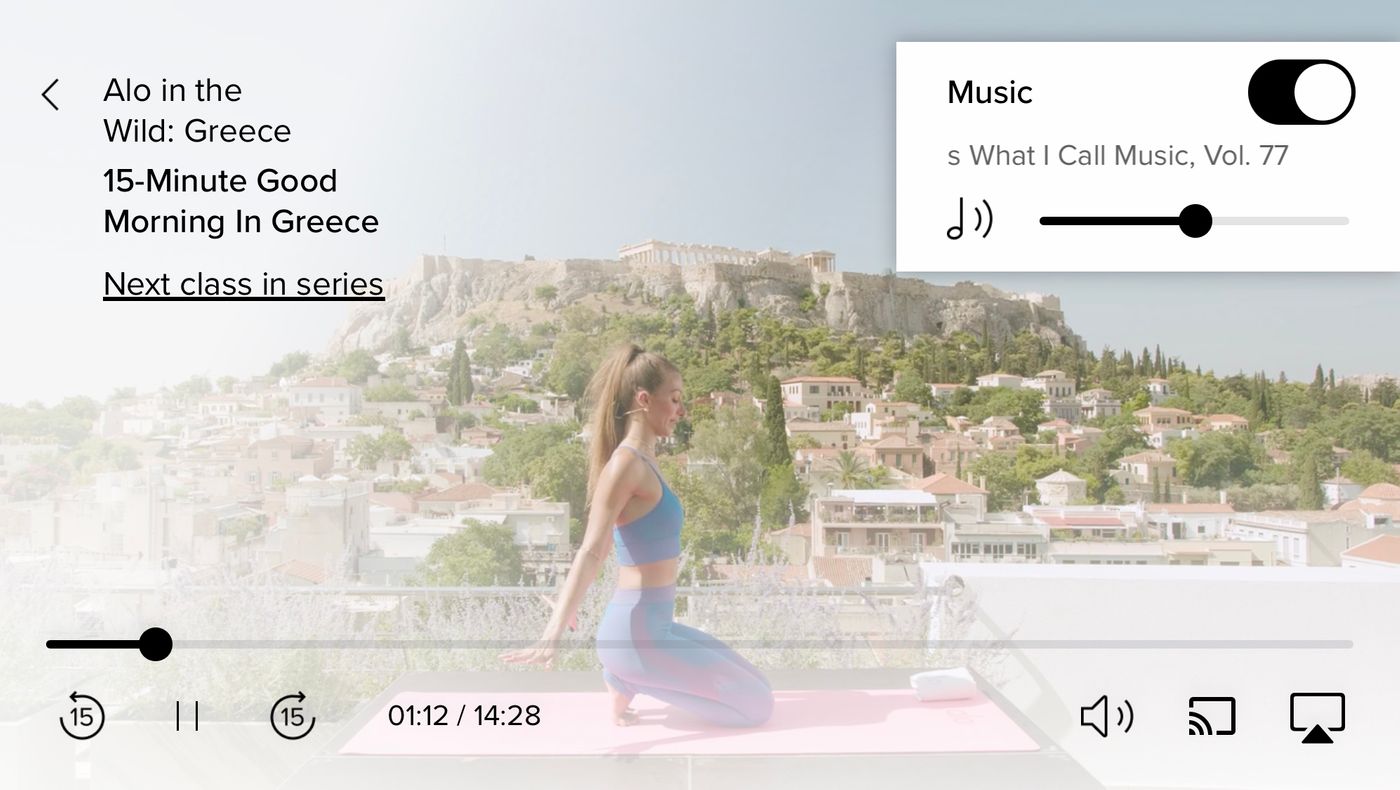
It’s for: Those focused on mindfulness
Price: Approx. $28 a month or $276 a year
Platforms: iOS, Android, web, Apple TV, Chromecast
Alo Moves’ library is packed with content for people who prefer to move on a yoga mat. From challenging power yoga to epic sound-bath meditation, the app features a range of classes. There are barre, Pilates and strength-based workouts, as well. Don’t know where to start? Drop into one of Alo Moves’ series, which include a virtual yoga retreat to the island of Santorini. If you can’t be in Greece, take your workout outside: Any class you bookmark can be downloaded offline.
Sweat
It’s for: People who want a plan
Price: $29 a month, or $177 a year.
Platforms: iOS, Android, web
Sweat is a personalized training app based on 37 different programs that range from two weeks to more than 24. After you select a program, the app plots your workout schedule on a calendar. Instead of a guided studio-style workout, Sweat assembles personalized exercises for each workout. You can input the equipment you have access to, choose your own playlist, select the pre-workout warm-up and substitute any exercises that are too easy or difficult. And if you need meal inspiration, the app suggests daily healthy recipes for breakfast, lunch, dinner and a snack. Unfortunately, there’s no support for offline workouts.
Apple Fitness+
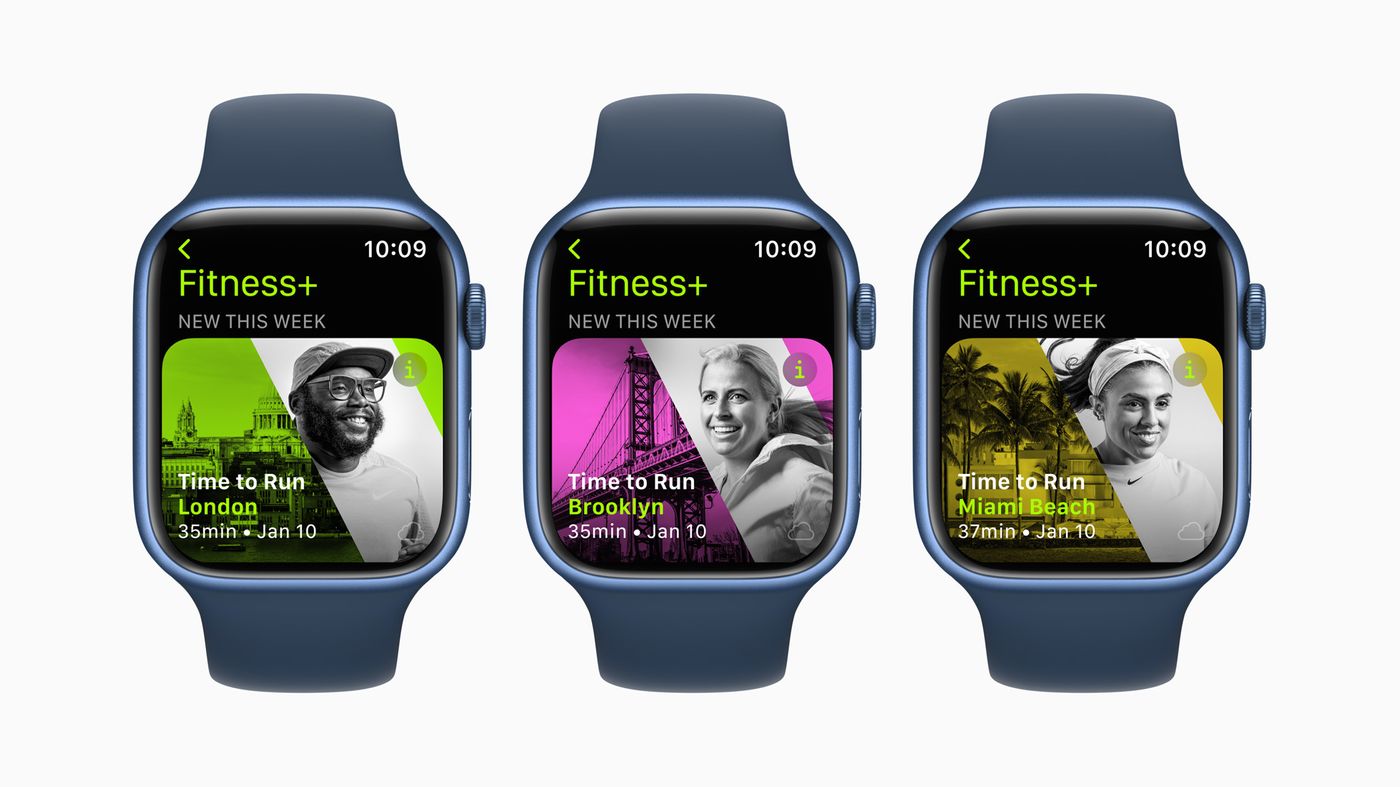
It’s for: Apple Watch users
Price: $14.99 a month or $119.99 per year.
Platforms: iOS, Apple Watch, Apple TV
Apple’s platform features guided activities across 10 different disciplines, including cycling and Pilates. Many of the workouts, which can be streamed or downloaded, are beginner and low-impact; there are programs designed specifically for older adults and people who are pregnant. Fitness+ does require users to own a Series 3 Apple Watch or newer. Watch stats, such as heart rate and calories, show up on screen during workouts. On Monday, the app launches guided, audio-based outdoor running workouts, called Time to Run. New episodes will be delivered weekly, and downloaded to the paired Apple Watch.
Fitness+ is a better value when it’s shared: Everyone in your iCloud household (up to six people) can use a single subscription—but they all need an Apple Watch.
Future
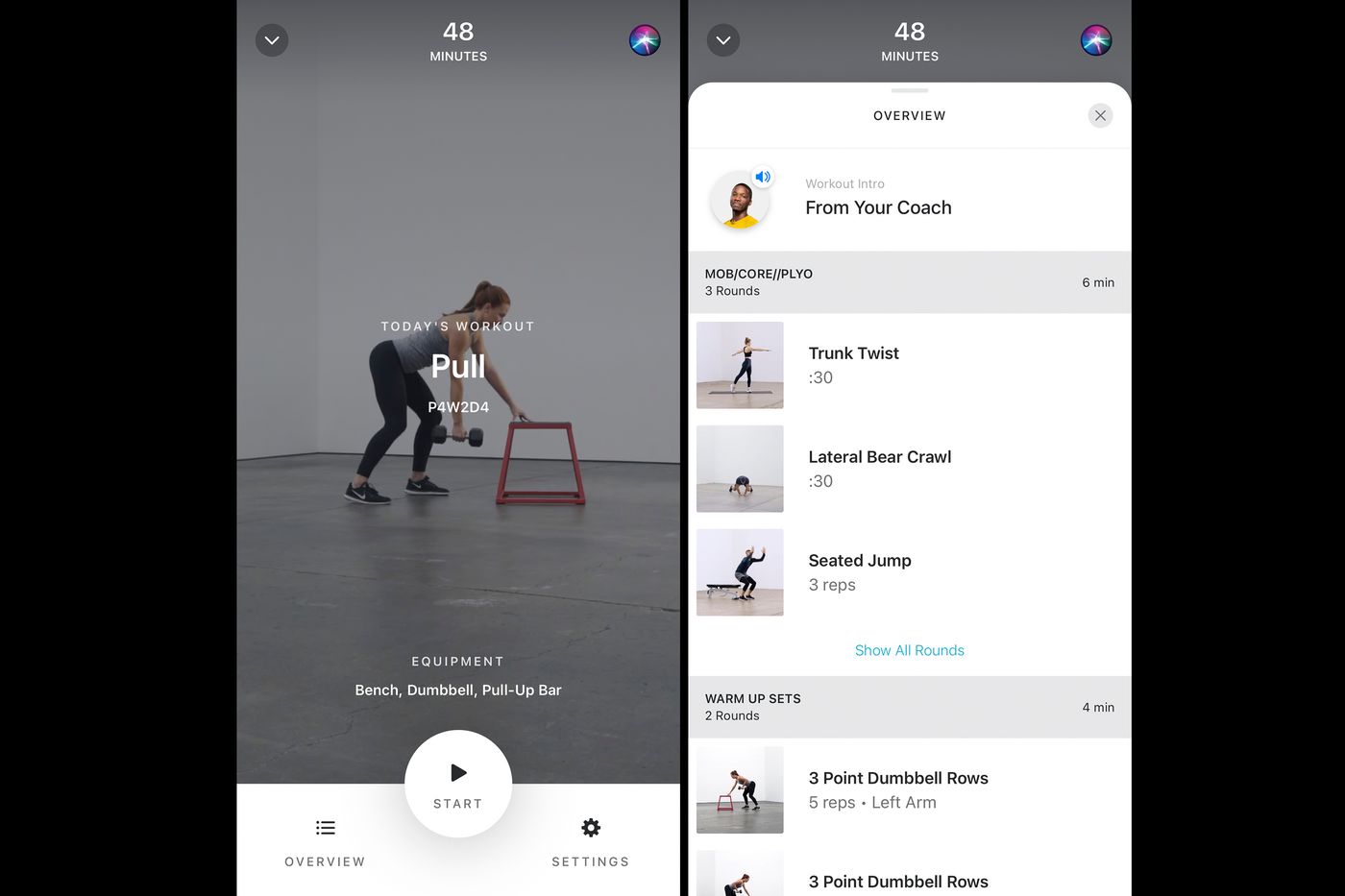
It’s for: People who want personal training and accountability
Price: Approx. $207 a month
Platforms: iOS and Apple Watch
Picking a workout, like picking what to watch on Netflix, can be daunting. Future takes the guesswork out of crafting a training plan. First, you’re paired with a live personal trainer, with whom you’ll discuss your schedule, equipment and goals over FaceTime. Then, every week, your coach will send a schedule that includes a personalized set of exercises, and track your progress on your Apple Watch, which is required. (The company plans to expand to Android this year.)
You can upload videos of your workouts to get feedback on your form. Travelling or need a rest day? Message your trainer through the app to modify your exercises accordingly. The app’s primary feature is accountability: Your trainer might nudge you if your Apple Watch stats suggest you aren’t sticking to the plan.
Reprinted by permission of The Wall Street Journal, Copyright 2021 Dow Jones & Company. Inc. All Rights Reserved Worldwide. Original date of publication: January 9, 2022.
 Copyright 2020, Dow Jones & Company, Inc. All Rights Reserved Worldwide. LEARN MORE
Copyright 2020, Dow Jones & Company, Inc. All Rights Reserved Worldwide. LEARN MORE
This stylish family home combines a classic palette and finishes with a flexible floorplan
Just 55 minutes from Sydney, make this your creative getaway located in the majestic Hawkesbury region.
As Paris makes its final preparations for the Olympic games, its residents are busy with their own—packing their suitcases, confirming their reservations, and getting out of town.
Worried about the hordes of crowds and overall chaos the Olympics could bring, Parisians are fleeing the city in droves and inundating resort cities around the country. Hotels and holiday rentals in some of France’s most popular vacation destinations—from the French Riviera in the south to the beaches of Normandy in the north—say they are expecting massive crowds this year in advance of the Olympics. The games will run from July 26-Aug. 1.
“It’s already a major holiday season for us, and beyond that, we have the Olympics,” says Stéphane Personeni, general manager of the Lily of the Valley hotel in Saint Tropez. “People began booking early this year.”
Personeni’s hotel typically has no issues filling its rooms each summer—by May of each year, the luxury hotel typically finds itself completely booked out for the months of July and August. But this year, the 53-room hotel began filling up for summer reservations in February.
“We told our regular guests that everything—hotels, apartments, villas—are going to be hard to find this summer,” Personeni says. His neighbours around Saint Tropez say they’re similarly booked up.
As of March, the online marketplace Gens de Confiance (“Trusted People”), saw a 50% increase in reservations from Parisians seeking vacation rentals outside the capital during the Olympics.
Already, August is a popular vacation time for the French. With a minimum of five weeks of vacation mandated by law, many decide to take the entire month off, renting out villas in beachside destinations for longer periods.
But beyond the typical August travel, the Olympics are having a real impact, says Bertille Marchal, a spokesperson for Gens de Confiance.
“We’ve seen nearly three times more reservations for the dates of the Olympics than the following two weeks,” Marchal says. “The increase is definitely linked to the Olympic Games.”

Getty Images
According to the site, the most sought-out vacation destinations are Morbihan and Loire-Atlantique, a seaside region in the northwest; le Var, a coastal area within the southeast of France along the Côte d’Azur; and the island of Corsica in the Mediterranean.
Meanwhile, the Olympics haven’t necessarily been a boon to foreign tourism in the country. Many tourists who might have otherwise come to France are avoiding it this year in favour of other European capitals. In Paris, demand for stays at high-end hotels has collapsed, with bookings down 50% in July compared to last year, according to UMIH Prestige, which represents hotels charging at least €800 ($865) a night for rooms.
Earlier this year, high-end restaurants and concierges said the Olympics might even be an opportunity to score a hard-get-seat at the city’s fine dining.
In the Occitanie region in southwest France, the overall number of reservations this summer hasn’t changed much from last year, says Vincent Gare, president of the regional tourism committee there.
“But looking further at the numbers, we do see an increase in the clientele coming from the Paris region,” Gare told Le Figaro, noting that the increase in reservations has fallen directly on the dates of the Olympic games.
Michel Barré, a retiree living in Paris’s Le Marais neighbourhood, is one of those opting for the beach rather than the opening ceremony. In January, he booked a stay in Normandy for two weeks.
“Even though it’s a major European capital, Paris is still a small city—it’s a massive effort to host all of these events,” Barré says. “The Olympics are going to be a mess.”
More than anything, he just wants some calm after an event-filled summer in Paris, which just before the Olympics experienced the drama of a snap election called by Macron.
“It’s been a hectic summer here,” he says.

AFP via Getty Images
Parisians—Barré included—feel that the city, by over-catering to its tourists, is driving out many residents.
Parts of the Seine—usually one of the most popular summertime hangout spots —have been closed off for weeks as the city installs bleachers and Olympics signage. In certain neighbourhoods, residents will need to scan a QR code with police to access their own apartments. And from the Olympics to Sept. 8, Paris is nearly doubling the price of transit tickets from €2.15 to €4 per ride.
The city’s clear willingness to capitalise on its tourists has motivated some residents to do the same. In March, the number of active Airbnb listings in Paris reached an all-time high as hosts rushed to list their apartments. Listings grew 40% from the same time last year, according to the company.
With their regular clients taking off, Parisian restaurants and merchants are complaining that business is down.
“Are there any Parisians left in Paris?” Alaine Fontaine, president of the restaurant industry association, told the radio station Franceinfo on Sunday. “For the last three weeks, there haven’t been any here.”
Still, for all the talk of those leaving, there are plenty who have decided to stick around.
Jay Swanson, an American expat and YouTuber, can’t imagine leaving during the Olympics—he secured his tickets to see ping pong and volleyball last year. He’s also less concerned about the crowds and road closures than others, having just put together a series of videos explaining how to navigate Paris during the games.
“It’s been 100 years since the Games came to Paris; when else will we get a chance to host the world like this?” Swanson says. “So many Parisians are leaving and tourism is down, so not only will it be quiet but the only people left will be here for a party.”
This stylish family home combines a classic palette and finishes with a flexible floorplan
Just 55 minutes from Sydney, make this your creative getaway located in the majestic Hawkesbury region.









